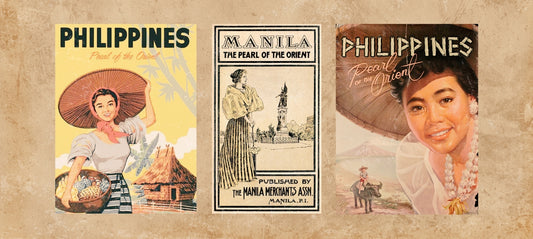She was the epitome of cool. A creative visionary way ahead of her time. An innovator in couture. A pioneer in fashion design in the Philippines, inspiring thousands and shaping the careers of generations of Filipino designers.
Her name was Salvacion Lim Higgins a.k.a. Slim: the Queen Mother of the modern terno and founder of the most prestigious and well-known fashion and dressmaking school in the Philippines. Ever heard of her? Not to worry, not a lot of people have.
With an androgenous name like Salvacion (and a badass nickname like “Slim”), those who have heard of her, but have never seen her face, may have mistaken “Slim” for a male designer — admittedly, us included. Amidst a sea of men working to reclaim the terno in the Philippines, Slim was able to pave her own path and create a name for herself — while looking so damn good.
If Slim were still alive, she’d be turning 100 years old this year and although she’s passed, her legacy and the essence of her mission and her work lives on. To Slim, it wasn’t just about constructing the perfect, stiff, traditional Filipiniana attire. Her creations were thoughtful and innovative. The techniques she developed and materials she used allowed for comfort and versatility while still exuding that dramatic, flattering crowd-pleaser of a Filipiniana-inspired gown. According to a Lifestyle Inquirer article celebrating Slim’s 100th birth year, “one thing was constant in her creations — the wearer could sit and stand without getting cramps.”
Describing the look of Slim’s couture dresses, which are basically stunning forms of “wearable art,” is quite the challenge. Her pieces channel that Rebel Filipiniana energy that we admire so much, as she defied social conventions, blurring the lines between traditional and contemporary — which, in the Philippines, is often frowned upon. At the same time, she pulled inspiration from some of the best and most classic couturiers back then, such as Christian Dior and Cristobal Balenciaga, creating her own version of Filipina glamour — theatrical yet still refined.


Slim’s ball gowns were influenced by Dior's New Look collection, adding in her own unique twists.
In an article from ABS-CBN entitled “The woman who raised me: Mark Higgins on his mother Salvacion Lim Higgins,” Salvacion’s son, a painter and designer, recalls memories from his childhood and literally refers to his mom as a rebel: “My mother herself was the rebel in her family. She had an artistic streak, along with a fiery temper. So my very gentle Chinese grandfather was never really able to ‘control’ her. She pretty much got away with calling the shots and being herself.”
Born on January 28, 1920 in Legazpi, Albay, Slim was an imaginative and curious child who liked to create her own version of the world (Aquarius baby, of course). Naturally, she went to the University of Santo Tomas to study Fine Arts and soon after entered into the fashion scene in 1947, when her first sketches appeared in the Manila Times Sunday Magazine — anonymously signed “S. Lim.” Along with her older sister Purificacion, she set up her first shop on Pennsylvania Street in Manila, then later Taft Avenue, now one of Metro Manila’s busiest and most important thoroughfares. It came at a good time, post-World War II, when Filipinos began embracing their national heritage, and more and more women were seen wearing Filipiniana dresses and gowns at formal events.

In the fashion scene, Manila was heavily enamoured with and influenced by the Hollywood glamour of the 1950s at the time. Inspired, Slim went to WORK, travelling to Europe and then New York to study the fashion collections, analyse the construction of designer wear and acquire dressmaking techniques, taking it all in and eventually developing her own unique style.

Truly wearable art.
Then in 1956, Slim presented one of her most iconic works — the grey asymmetrical point terno. It was a complex terno dress with a geometric silhouette, origami-like side pleat and crinkled draping, all held together with only one seam. An absolute stunner. The iconic dress is now part of the fashion collection of London’s Victoria & Albert Museum and graces the cover of the coffee table book SLIM: Salvacion Lim Higgins: Philippine Haute Couture, 1947-1990, which documents her body of work through dozens of archival photos and descriptive passages, all gorgeously packaged together.
The iconic asymmetrical point terno.
In the same ABS-CBN article, Mark Higgins believes he inherited his mom’s creative energy as well as her “obsession for beautiful textiles”. “In terms of character, I learned from her a real sense of ‘self’ — an awareness of who I am, and more importantly, who I am not. She was also an original thinker, who always thought outside the box,” he adds.
Slim catapulted into popularity, combining Filipino and Western fashion elements thus redefining Philippine couture. Strapless dresses with dramatic shawls, vibrant-coloured silk ternos with embroidered tapis, ternos with intricately hand-beaded sequined “hobble skirts,” ternos with an interesting balloon-meets-serpentina skirt, you name it. Her signature trademark draping highlighted the female form while sprinkling hints of avant garde and unique geometric shapes.
With her great eye for colour and cut, Slim was able to think three-dimensionally, whether devising the silhouette or lines of a dress or thoughtfully including the smallest but richest detail of ornamentation. She breathed new life into the traditional Filipiniana terno dress.

Stunning fringe terno worn by First Lady Leonila Garcia in the late 1950s. Photo by Neal Oshima.
In October 1960, Slim and her sister Purificacion established Slim’s Fashion and Arts School, which now celebrates over 60 years of providing in-depth technical courses in fashion design and dressmaking/pattern-making. Together, the sisters developed the super technical lessons that continue to serve as the foundation for the school’s curriculum today, more popularly known as “the Slim’s Method.”

Salvacion and her sister Purification.
Mark describes his mother’s style and guiding principles, adding that she was not a fan of short cuts or superficial skills, instead building on solid foundational skills in all aspects of fashion, from the sketches to concept to execution.
“She believed in never relying on others,” Mark Higgins says, in another article by Manila Standard. “Students who take our important courses leave the school fully empowered and ready to make a living. They can design, construct and finish their clothes without any help.
“She also had a strong work ethic; she took her work seriously and was quite a workaholic. At Slim’s, we try to push young students to develop habits that will help them become productive, successful professionals.”
As the oldest and most established fashion school in the Philippines, tens of thousands of students have graced its walls — including our founder Caroline Mangosing’s own mother, Carmita Mangosing back in the 60s.
“Dressmaking was big with my mom. She taught me how to use a sewing machine when I was young, like 7 years old,” says Caroline, whose mother had a clothing line in the Philippines called Skeeepeee. “She was always mentioning going to Slim’s — it was a prestigious accomplishment. My mom also had couture dresses made by Slim for the parties she went to in her teens. So sosyal!”

Caroline Mangosing’s mother Carmita dressing her for her godmother’s wedding.

A younger Caroline and her sister Catherine wearing their mother's clothing designs.
Caroline admits she never really knew anything about Slim other than her prestigious name and fashion school (she even mistook her name “Slim” for a male designer!) But it’s almost as if inklings of her mother’s learnings and that Rebel Slim Energy has passed over to her and infused into VINTA Gallery’s creations. Caroline’s vision for recreating modern terno dresses and Filipiniana attire is an unintentional, cosmic tribute to the legacy of Slim, what she stood for and how she transformed the very fabric of Philippine fashion (no pun intended).
As we dig deeper and deeper about the life and times of Salvacion Lim Higgins, we also read how she was like as a person — with characteristic humility, she downplayed her incredible talent and distinguished status as a creative visionary and fashion pioneer. She was also known to have a very strong work ethic, a workaholic many would say, that contributed to her success.


Select pieces from the Salvacion Lim Higgins terno exhibit. From Preview.ph.
Slim passed away on September 15, 1990 in San Francisco, days after designing her last collection, but her legacy will continue to empower Filipino fashion designers and creatives for many years to come.








